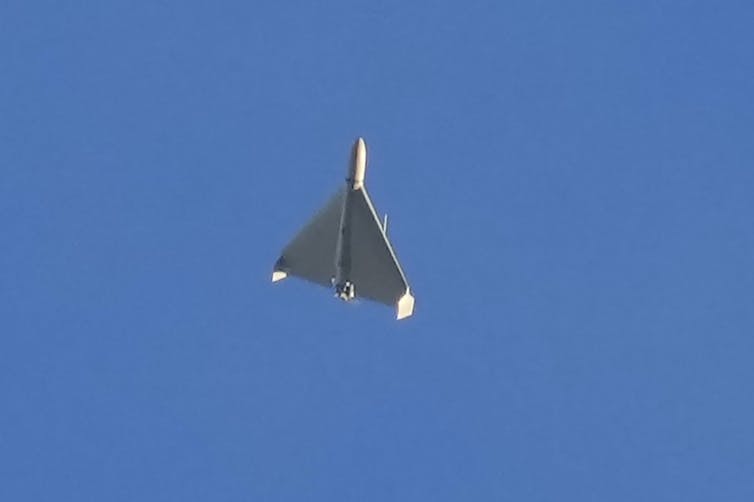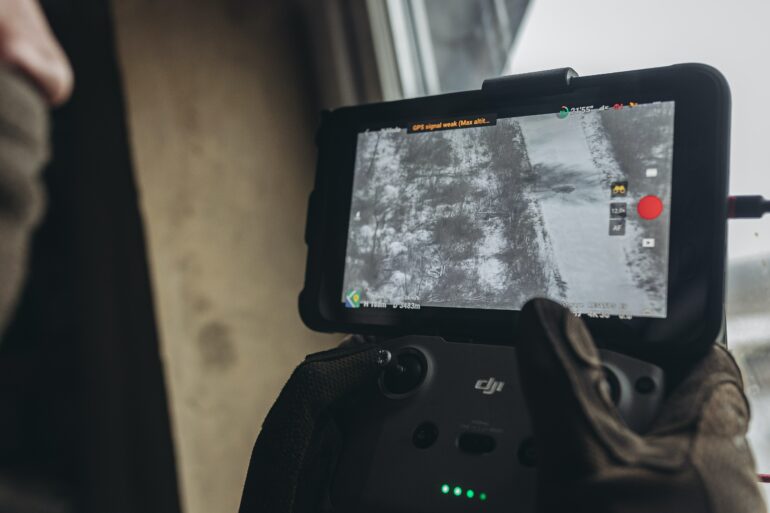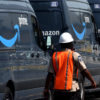Over the past year, images from Ukraine have often portrayed a war resembling other conflicts from the past half-century. Russian forces deploy tanks, fighter planes, warships, amphibious vehicles and attack helicopters. Ukrainians fight back with anti-tank weapons, grenade launchers and anti-aircraft missiles. This is how much of the war appears on the ground.
But there’s another side to the conflict – a hypermodern battleground where drones play a crucial role in surveillance, reconnaissance and combat missions. These technologies may foreshadow a world in which armed conflicts are conducted largely by remote control – and perhaps someday, by artificial intelligence.
What lessons does the drone war in Ukraine hold for the future?
Commercial and portable drones
One lesson is that drones have been democratized, accessible to anyone with a few hundred dollars and a bit of technical knowledge. In Ukraine, DIY hobbyists have modified and weaponized small, inexpensive commercial drones by outfitting them with high-resolution cameras and explosives.
Ukraine’s Aerorozvidka air reconnaissance unit made headlines early in the war when its drones helped stop a Russian convoy headed for Kyiv. Aerorozvidka personnel use spiderlike hexacopters, octocopters and other remote-controlled devices as weapons.
These gadgets typically fly at low altitudes – less than 1.5 miles (2.4 kilometers) – and limited distances – less than 19 miles (31 kilometers). Russia’s fighter jets aren’t designed to prevent attacks from such small drones.
‘Suicide’ drones
Both sides in the war have also unleashed loitering munitions — sometimes called “suicide” drones. These self-destructing devices can circle around targets for hours before attacking. Ukraine’s arsenal includes U.S.-made Switchblade and Phoenix Ghost models, while Russian forces use domestically manufactured Lancet-3 drones. Some of these weapons are small enough to fit in a backpack. Ukrainian forces have also fashioned DIY loitering munitions by attaching explosives to off-the-shelf quadcopters.
Russian troops have also used Iranian-made Shahed-136 drones, which recently terrorized Kyiv. At about 11 feet (3.5 meters) long, these fixed wing drones resemble a small plane. Loitering munitions typically cost US$10,000-$20,000 each, and have a longer range – 932 miles (1,500 kilometers) or more – than cheap commercial drones. Most have swarming capability, which allows multiple drones to attack a target and inflict greater damage.

An Iranian-made Shahed-136 suicide drone seconds before it hit buildings in Kyiv, Ukraine, on Oct. 17, 2022.
AP Photo/Efrem Lukatsky
In the Ukraine war, it’s much more expensive to intercept loitering munitions than to deploy them. Using MiG-29 jet fighters, C-300 cruise missiles and other Cold War-era weapons to stop these drones far exceeds the cost of the disposable robots. New high-tech battles…



